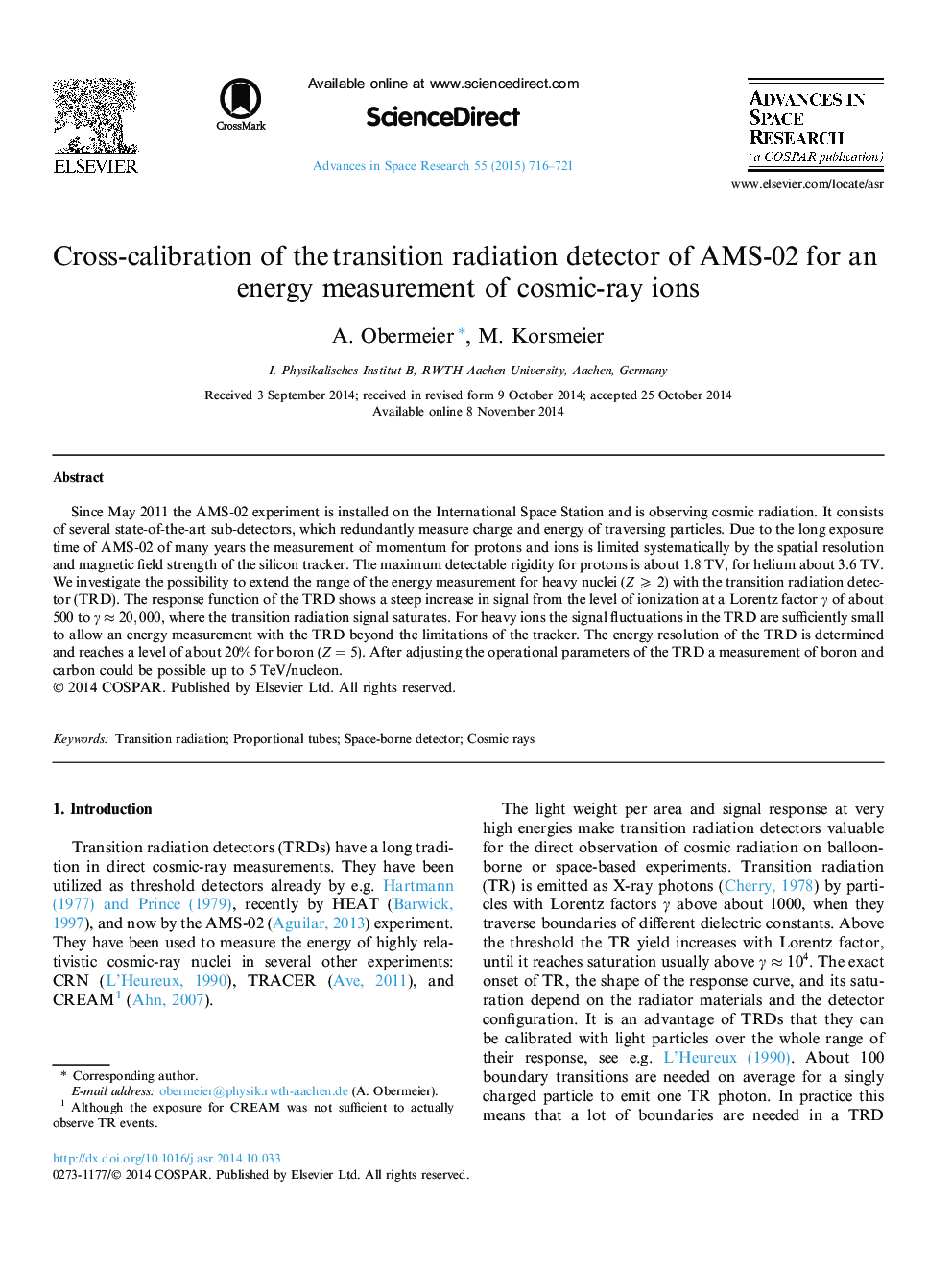| Article ID | Journal | Published Year | Pages | File Type |
|---|---|---|---|---|
| 1764314 | Advances in Space Research | 2015 | 6 Pages |
Since May 2011 the AMS-02 experiment is installed on the International Space Station and is observing cosmic radiation. It consists of several state-of-the-art sub-detectors, which redundantly measure charge and energy of traversing particles. Due to the long exposure time of AMS-02 of many years the measurement of momentum for protons and ions is limited systematically by the spatial resolution and magnetic field strength of the silicon tracker. The maximum detectable rigidity for protons is about 1.8 TV, for helium about 3.6 TV. We investigate the possibility to extend the range of the energy measurement for heavy nuclei (Z⩾2Z⩾2) with the transition radiation detector (TRD). The response function of the TRD shows a steep increase in signal from the level of ionization at a Lorentz factor γγ of about 500 to γ≈20,000γ≈20,000, where the transition radiation signal saturates. For heavy ions the signal fluctuations in the TRD are sufficiently small to allow an energy measurement with the TRD beyond the limitations of the tracker. The energy resolution of the TRD is determined and reaches a level of about 20% for boron (Z=5Z=5). After adjusting the operational parameters of the TRD a measurement of boron and carbon could be possible up to 5 TeV/nucleon.
